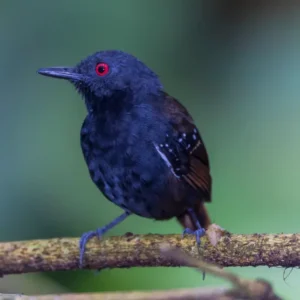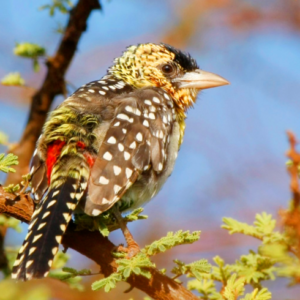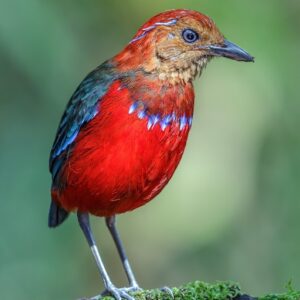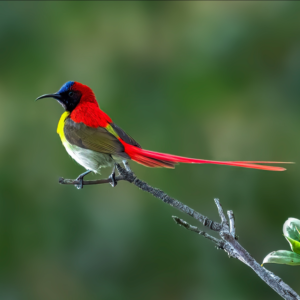

- Kingfishers primarily eat fish, mainly minnows and sticklebacks, but also aquatic insects, freshwater shrimp, and tadpoles.
- They close their eyes while diving into the water, so they fish blind! They move their head before diving to accurately judge the depth of the fish.
- Kingfisher courtship occurs in spring. The male will approach the female with a fish in his beak. He will hold it so the fish’s head is facing outwards and try to give it to the female. If he is unsuccessful, he will simply eat the fish. You may have to repeat this feeding behavior for some time before mating occurs.
- A pair of kingfishers digs a tunnel to nest in the vertical, sandy banks of a river. The nest chamber at the end has a slight depression to prevent the eggs from falling out, but no material is introduced into the nest.
- The first clutch of 6 to 7 eggs is laid in late March or early April. Each chick can eat 12 to 18 fish a day, meaning that adults can catch more than 120 fish each day for their breeding.
- Chicks are fed in rotation. Once a chick is fed, it moves to the back of the nest to digest its food, causing the others to move forward.
- Once out of the nest, the young are fed for only four days before the adults expel them from the territory and begin the next breeding. Often 2 to 3 young are raised in one breeding season.
- The kingfisher’s beak design is aerodynamically efficient, allowing it to dive from its perch toward its prey, with maximum speed and minimal splashing. In fact, the peak design is so clever that the front of many Japanese bullet trains are modeled to imitate it.
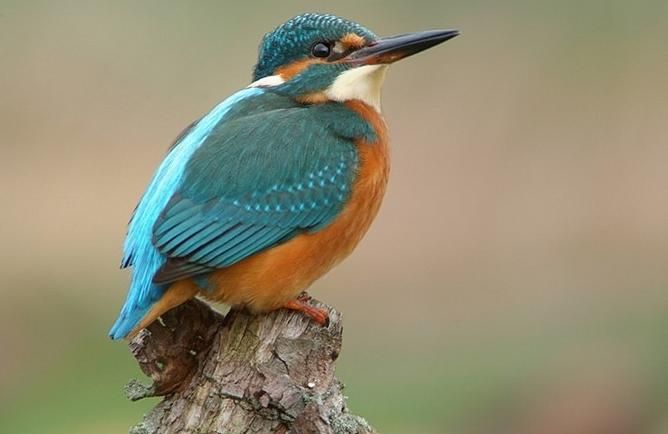
Laura Preston, Falls of Clyde Ranger Support our vital work and join us today!
Comment disabled for this post!

